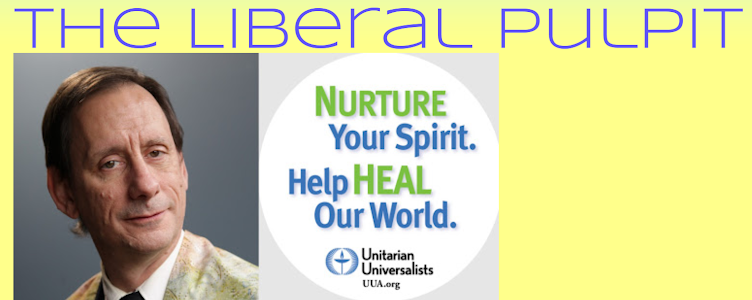Pretending that there’s no difference between black and white is basically tantamount to pretending that we are all white. Color-blindness allows the norms and assumptions of white culture to hold unchallenged sway.
In the same way, sexual-orientation-blindness amounts to projecting heteronormativity. Now we start getting into areas that are going to be for many of us a bit more challenging. You see, while many in the LGBT community have worked hard for recognition of same-sex marriage, not all LGBT folk have unalloyed enthusiasm for the spread of acceptance of same-sex marriage. Marriage itself is heteronormative, they point out. Marriage takes the heterosexual model as the norm: one partner, living together and running a household together, for life – or at least starting out with the intention that it be for life. But maybe that model should be challenged rather than pursued. Some queer theorists criticize the traditional family as a deeply problematic institution that ought to challenged and called into question.
Concept Number Three: Identity -- and Everything -- Are Shifting Cultural Constructs
Some queer theorists also challenge the very idea of identity. Concept one was, "let’s ignore it." Concept two was, "let’s recognize identity as a way to respect who a person is." Now we get to concept three: identity is a problematic notion.
Starting with gender, let us acknowledge that the clear black-and-white categories “male” and “female” aren’t really so clear. Some people are born intersex, where the biological sex cannot be clearly classified as either male or female. The practice of forcibly resolving the ambiguity, forcing the child into one box or the other, sometimes using surgery to help resolve the ambiguity on one side or the other, has been harmful and traumatic. Let us learn to accept ambiguity. In fact, suggest some queer theorists, more gender ambiguity might be good for us all. We might all dress and style ourselves in ways designed to make it harder instead of easier for others to categorize our gender at a glance. (See JJ Levine's "Switch" photographs)
Cultural studies professor Nikki Sullivan writes in A Critical Introduction to Queer Theory (2003):
“Sexuality is not natural, but rather, is discursively constructed. Moreover, sexuality, as we shall see, is constructed, experienced, and understood in culturally and historically specific ways. Thus, we could say that there can be no true or correct account of heterosexuality, of homosexuality, of bisexuality....Contemporary views of particular relationships and practices are not necessarily any more enlightened or any less symptomatic of the times than those held by previous generations.” (1)Queer theorist David Halperin describes three very different cultures in which sexual contact between older men and boys has been acceptable: the ancient Greeks, some Native American tribes, and New Guinea tribesmen. He asks: Is this the same sexuality? Such contact has some superficial similarities, including acceptability, in all three cultures, yet the social contexts and meanings of that contact was so varied, the cultural understanding of what was going on so diverse, that we can’t call it the same sexuality.
The brilliant French philosopher and social theorist Michel Foucault, pioneered new ways to think about and understand ourselves. Foucault is a founding figure for a number of kinds of study, including queer theory. His three volume History of Sexuality revealed how sexuality has been culturally constructed in Western civilization. In Britain, and much of Europe, prior to the 1880s, Foucault points out, “sodomy” meant any form of sexuality that did not have procreation as its aim. Using birth control counted as sodomy – and penalties against sodomy were severe.
Analysis of the time reveals that the laws were directed against acts, not against a particular type of person. There was no understanding of sexual orientation as an identity – any more than we have an understanding of adulterer as an identity -- or, say, “person who parks in a no parking zone.” It wasn’t until the later 1800s that “particular acts came to be seen as an expression of an individual’s psyche, or as evidence of inclinations of a certain type of subject” (Sullivan 3).
Certain forms of sexuality moved from being seen as horrible acts to which anyone might succumb, to being seen as the expression of a particular type of person. As Sigmund Freud expressed and magnified the new way of thinking, sex was at the root of everything about us. Thus, “the homosexual” became a personage – a life form, a certain type of degenerate whose entire character, everything about him, was corrupted by his sexuality.
That hardly seems to us like progress. Yet, as traumatic and disastrous as that cultural phase was for many, it paved the way for our later attitudes. Once we saw sexual orientation as an identity – subject to treatment rather than criminal or moral judgment -- the ground was laid for the next step. Only then could culture move to seeing that identity as not harming anyone else. From there to: not harming themselves either. And then: to being tolerated, to being accepted, to being welcomed, to being celebrated as a worthy and beautiful part of the diverse spectrum of human expression.
That’s a huge change – a series of huge changes – all within the last 130 years or so.
* * *
This is part 2 of 3 of "Queer Theory"
Part 1: All You Need Is Love?
Part 3: Bearing the Unbearable Ambiguity of Sexuality


No comments:
Post a Comment